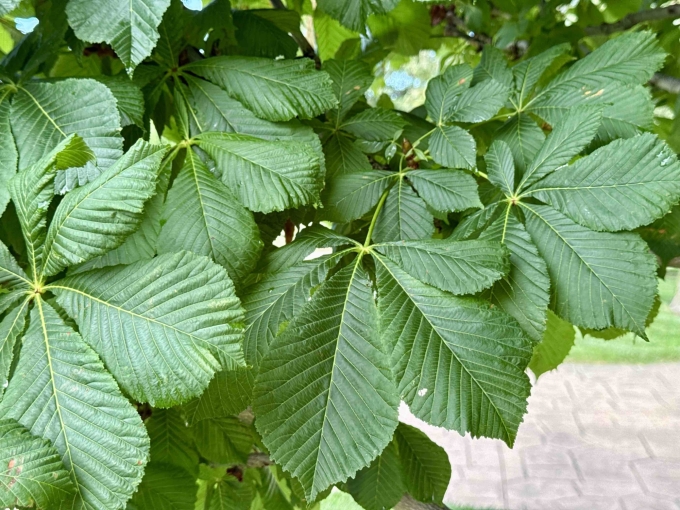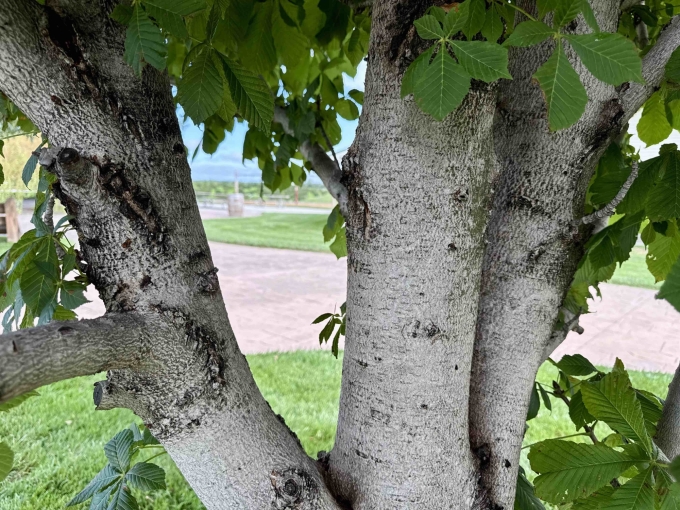Common Name: Horse-Chestnut
Family: Sapindaceae
Plant Type: Deciduous Tree
Native Range: Balkan Peninsula (southeastern Europe)
Hardiness Zones: 3–7
Height: 50–75 feet
Spread: 40–60 feet
Bloom Time: Late spring (May–June in Nebraska)
Bloom Description: Large, upright clusters (panicles) of white flowers with yellow and pink markings
Sun Exposure: Full sun to light shade
Water Needs: Medium
Soil Preference: Moist, well-drained soils; tolerates clay and loam
Management Level: Medium
Suggested Use: Shade tree, specimen tree, park tree
Attracts: Bees, some pollinators, though flowers are less beneficial to native wildlife
Tolerates: Air pollution, heavy soils, some drought (once established)
Notable Features: Showy flowers, large palmate leaves, distinctive spiny fruits containing shiny brown seeds (“conkers”)
Nebraska Growing Notes:
Horse-Chestnut is a large, majestic shade tree valued for its striking spring flowers and bold foliage. It performs reasonably well in eastern Nebraska, where soils are deeper and moisture is more reliable.
It prefers full sun and moist, well-drained soils, though it tolerates clay and urban conditions. Summer heat and drought can cause leaf scorch in exposed or dry sites, and it is best suited for parks, campuses, or large lawns where space and irrigation are available.
The tree produces large, spiny seed capsules that drop in fall, attractive but potentially messy in high-traffic areas.
Landscape Use:
Best used as a specimen tree, large shade tree, or in parks and estates where its size and ornamental features can shine. Not ideal for small yards due to its size and fruit drop. Pairs well with lindens, oaks, and elms in large landscapes.
Caution:
Fruits and seeds are toxic if ingested by humans and pets. The tree can suffer from leaf scorch, leaf blotch, and scale insects in hot or dry conditions. Messy fruit drop may be undesirable near sidewalks or patios.




